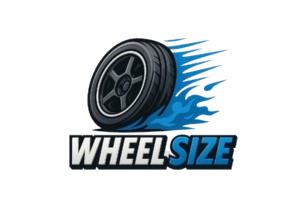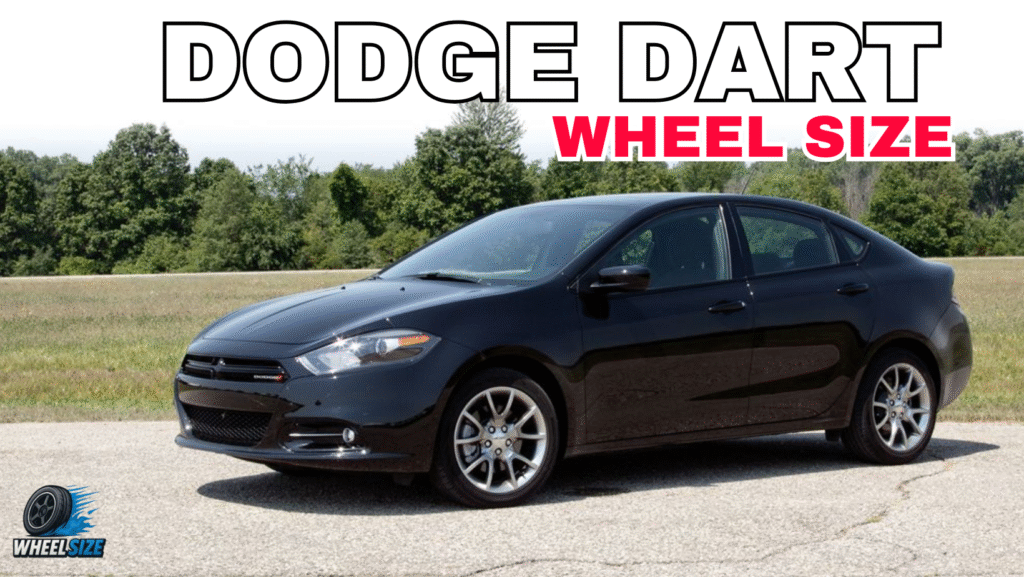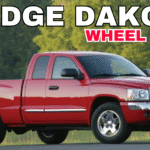The Dodge Dart has been available in various forms, from the classic models of the 1960s to the modern compact sedan introduced in the 2010s. Every generation offered new styles and engineering improvements, which also entailed modifications in wheel diameters, bolt patterns, and offsets. It’s not just about how the wheels appear; the appropriate fit influences how the car handles, how well it brakes, and how comfortable it is to drive in general. This guide will show you the most important wheel specs for all the major Dodge Dart generations. It will also give you useful recommendations on how to upgrade your wheels and prevent frequent mistakes. This article will help you maintain your Dart running smoothly, whether you’re restoring an old one or improving a newer one.
Understanding Dodge Dart Wheel Fitment
Before getting into the details for each generation, it’s important to know what wheel fitting is. The offset tells you how much the wheel sits in or out of the fender, and the bolt pattern tells you how many lug nuts there are and how far apart they are. The width and diameter of the rim determine the choice of tires, which in turn affects how the car handles and how comfortable it is to ride in. Choosing wheels that are similar to the ones that came with the Dart helps keep it balanced and safe. If you’re thinking about aftermarket items, it’s crucial to remember these principles so you don’t have problems like rubbing, bad alignment, or stress on suspension parts. When you know the basics, every upgrade feels like a step up.
Dodge Dart III (1963–1966) Wheel Fitment
The third-generation Dodge Dart was a step toward a more refined, mid-size design, and its wheels showed that balance between appearance and function. Most factory versions from this time period had smaller steel wheels, usually between 13 and 14 inches in diameter, and narrow tires that were right for the size and power of the automobile. The bolt pattern was usually 5×4 inches, which was a common Mopar layout back then. Many owners of these historic cars want to maintain the original look by using period-correct wheels. However, changing to 15-inch wheels can make it easier to get tires and make the car more stable on the road. To avoid problems with the Dart’s suspension geometry, you should pay close attention to the offset and width.
| Year | Hub Bore | Bolt Pattern | Thread Size | OEM Tire Size | OEM Rim Size | Offset Range | Tire Pressure | Aftermarket Wheel |
|---|---|---|---|---|---|---|---|---|
| 1963 | 59.2 | 5×101.6 (5×4) | 7/16″ – 20 UNF | 6.50-13 | 4.5Jx13 ET31 | 29 – 33 | 2.0 | 13″ – 15″ |
| 1964 | 59.2 | 5×101.6 (5×4) | 7/16″ – 20 UNF | 6.50-13 | 4.5Jx13 ET31 | 29 – 33 | 2.0 | 13″ – 15″ |
| 1965 | 59.2 | 5×101.6 (5×4) | 7/16″ – 20 UNF | 6.50-13 | 4.5Jx13 ET31 | 29 – 33 | 2.0 | 13″ – 15″ |
| 1966 | 59.2 | 5×101.6 (5×4) | 7/16″ – 20 UNF | 6.50-13 | 4.5Jx13 ET31 | 29 – 33 | 2.0 | 13″ – 15″ |
Dodge Dart IV (1967–1969) Wheel Fitment
By the end of the 1960s, the Dodge Dart was known as a little car that was good for performance, especially in muscle-oriented trims like the GTS. Most factory wheels were 14 inches in diameter, and the bolt patterns were always 5×4 inches. Wider tires became more prevalent, which made V8-powered variants easier to handle and grip. A lot of muscle car fans today choose aftermarket wheels that look like they belong on a muscle car from the time period, but they also have radial tires for safety and comfort. When putting wheels on a Dart IV, it’s important to think about how much space there is for the brakes, especially if the car has disc brakes. These Darts are both exciting and reliable on the road since they keep their dimensions near to stock. This keeps a balance between modern performance and classic elegance.
| Year | Hub Bore | Bolt Pattern | Thread Size | OEM Tire Size | OEM Rim Size | Offset Range | Tire Pressure | Aftermarket Wheel |
|---|---|---|---|---|---|---|---|---|
| 1967 | 59.2 | 5×101.6 (5×4) | 7/16″ – 20 UNF | 6.50-13 | 4.5Jx13 ET31 | 29 – 33 | 2.0 | 13″ – 15″ |
| 1968 | 59.2 | 5×101.6 (5×4) | 7/16″ – 20 UNF | 6.50-13 | 4.5Jx13 ET31 | 29 – 33 | 2.0 | 13″ – 15″ |
| 1969 | 59.2 | 5×101.6 (5×4) | 7/16″ – 20 UNF | 6.50-13 | 4.5Jx13 ET31 | 29 – 33 | 2.0 | 13″ – 15″ |
Dodge Dart IV Facelift (1970–1976) Wheel Fitment
The Dodge Dart had a facelift that made it last longer and made some changes to its style and mechanics. The size of the wheels kept changing. Most factory setups came with 14-inch wheels, but some vehicles, notably higher trims, may have 15-inch rims as an option. The 5×4-inch bolt pattern remained the same, which makes it easier to get replacements now. For people who like to restore or change these models, changing to larger diameter wheels can make it easier to get current tires. However, it’s crucial to keep the offset in mind so that the tires don’t rub against the wheel wells. Many people prefer aftermarket alloys to give the Dart a new look while keeping its classic style. This generation is especially adept at upgrading wheels, as it maintains the original look while enhancing the car’s driving experience.
| Year | Hub Bore | Bolt Pattern | Thread Size | OEM Tire Size | OEM Rim Size | Offset Range | Tire Pressure | Aftermarket Wheel |
|---|---|---|---|---|---|---|---|---|
| 1970 | 59.2 | 5×101.6 (5×4) | 7/16″ – 20 UNF | D78-14 | 4.5Jx14 ET31 | 29 – 33 | 2.0 | 14″ – 15″ |
| 1971 | 59.2 | 5×101.6 (5×4) | 7/16″ – 20 UNF | D78-14 | 4.5Jx14 ET31 | 29 – 33 | 2.0 | 14″ – 15″ |
| 1972 | 59.2 | 5×101.6 (5×4) | 7/16″ – 20 UNF | D78-14 | 4.5Jx14 ET31 | 29 – 33 | 2.0 | 14″ – 15″ |
| 1973 | 59.2 | 5×101.6 (5×4) | 7/16″ – 20 UNF | D78-14 | 4.5Jx14 ET31 | 29 – 33 | 2.0 | 14″ – 15″ |
| 1974 | 59.2 | 5×101.6 (5×4) | 7/16″ – 20 UNF | D78-14 | 4.5Jx14 ET31 | 29 – 33 | 2.0 | 14″ – 15″ |
| 1975 | 59.2 | 5×101.6 (5×4) | 7/16″ – 20 UNF | D78-14 | 4.5Jx14 ET31 | 29 – 33 | 2.0 | 14″ – 15″ |
| 1976 | 59.2 | 5×101.6 (5×4) | 7/16″ – 20 UNF | D78-14 | 4.5Jx14 ET31 | 29 – 33 | 2.0 | 14″ – 15″ |
Dodge Dart PF (2012–2016) Wheel Fitment
The Dodge Dart PF that came back was a totally different automobile from the classic version. It was a small sedan with Italian technical influence. It came with 16-inch wheels as standard, while higher versions had 17- and 18-inch alloys. The bolt pattern changed to 5×110 mm, which is the same as the bolt pattern on recent Chrysler and Fiat chassis. Offsets were higher, which made the Dart PF look sleeker and made it easier to handle. People who want to enhance their cars generally choose lightweight alloys in the 18- or 19-inch range because they look sportier and handle better on the road. Even though this Dart has a contemporary suspension system, buying wheels that fit with OEM specifications will keep you comfortable and keep parts like wheel bearings and bushings from getting too much stress.
| Year | Hub Bore | Bolt Pattern | Thread Size | Wheel Torque | OEM Tire Size | OEM Rim Size | Offset Range | Tire Pressure | Aftermarket Wheel |
|---|---|---|---|---|---|---|---|---|---|
| 2012 | 65.1 | 5×110 | M12 x 1.25 | 128 | 205/55R16 91H | 6.5Jx16 ET41 | 39 – 43 | 2.3 | 16″ – 18″ |
| 2013 | 65.1 | 5×110 | M12 x 1.25 | 128 | 205/55R16 91H | 6.5Jx16 ET41 | 39 – 43 | 2.3 | 16″ – 18″ |
| 2014 | 65.1 | 5×110 | M12 x 1.25 | 128 | 205/55R16 91H | 6.5Jx16 ET41 | 39 – 43 | 2.3 | 16″ – 18″ |
| 2015 | 65.1 | 5×110 | M12 x 1.25 | 128 | 205/55R16 91H | 6.5Jx16 ET41 | 39 – 43 | 2.3 | 16″ – 18″ |
| 2016 | 65.1 | 5×110 | M12 x 1.25 | 128 | 205/55R16 91H | 6.5Jx16 ET41 | 39 – 43 | 2.3 | 16″ – 18″ |
Aftermarket Wheel Upgrade Tips for Dodge Dart
When it comes to replacing the wheels on a Dodge Dart, every generation may profit from making smart choices. When you put performance tires on bigger rims, you get better grip and handling. Lightweight alloy wheels can also make your car more efficient. If the aftermarket wheels don’t fit the correct hub bore size, though, you may need to use spacers or hub-centric rings. Also, think about what the car is for. Is it a showpiece for the weekend, a daily driver, or a performance build? This will help you choose the ideal wheels and tires. If you make changes to the Dart that are safe, it will not only look better, but it will also drive better. A good improvement makes your car seem better, safer, and faster, which makes driving more fun.
Common Wheel Fitment Mistakes to Avoid
Upgrading the wheels on a Dodge Dart can change how it looks and feels, but it’s easy to make mistakes. One common mistake is not paying attention to wheel offset, which can make the tires grind against the fenders or suspension parts. Oversized wheels and tires may look cool, but they might mess up the speedometer and make the ride less comfortable. Another mistake is picking low-quality aftermarket rims, which could be dangerous. Before you buy anything, always check the load ratings and fitment instructions. You might save money up front by taking shortcuts, but they often cost a lot to fix afterward. Using wheels that fit the Dart’s design and engineering keeps both old and new versions running smoothly without causing extra wear or problems with handling.
Conclusion
Over the years, the Dodge Dart has taken on many different forms, from a classic mid-size cruiser to a dynamic muscle compact to a modern sedan. Each generation had its own set of wheel specs that had a direct effect on how the automobile drives and appears now. Paying particular attention to how the wheels fit on your 1960s Dart III or 2010s Dart PF will make it easier to drive, safer, and more fun to drive for a long time. Choosing the proper wheels will improve the car without changing its design. Before you buy something, always check the measurements. If you’re not sure, go to a fitting specialist or a trusted source. A set of wheels that fits properly is the perfect way to cap off any Dodge Dart makeover.



